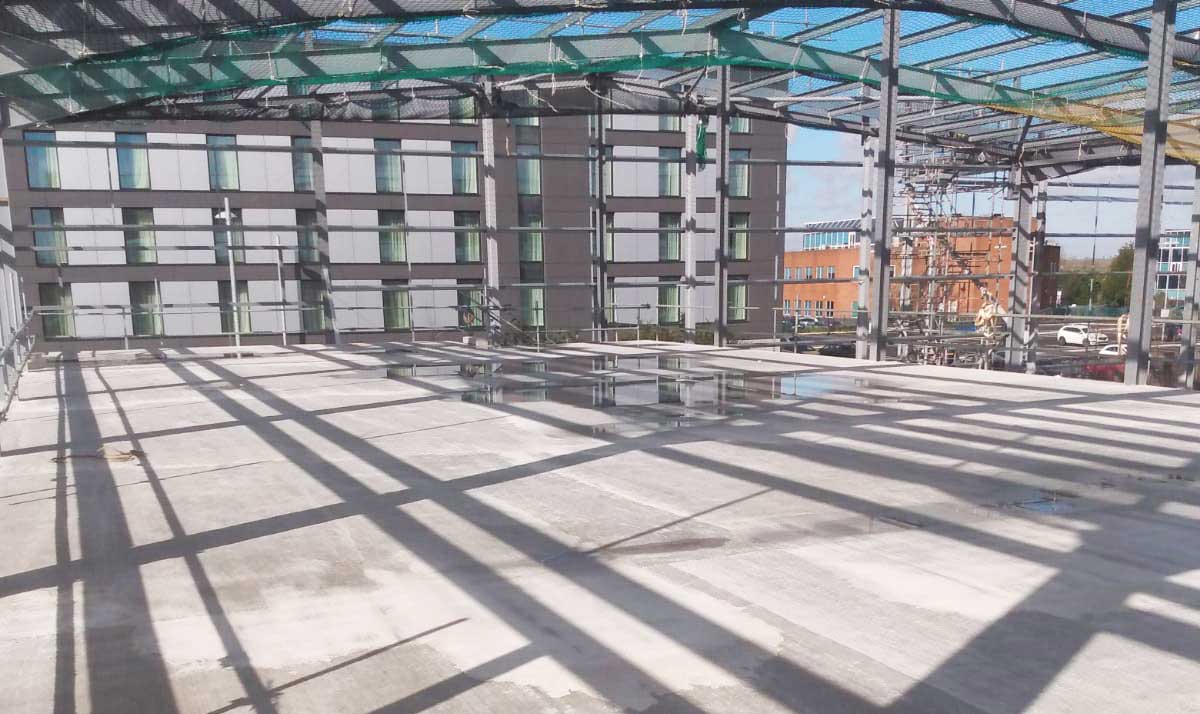Composites: The Trick to Modern, Sustainable Building And Construction
Composites: The Trick to Modern, Sustainable Building And Construction
Blog Article
Unlocking the Ecological Benefits of Recycled Compounds in Construction and Design
In the realm of construction and style, the use of recycled compounds holds considerable pledge for boosting sustainability techniques and lowering ecological influence. The shift in the direction of a more lasting future in these sectors pivots on opening the complete capacity of recycled composites.

Environmental Impact Reduction
The reduction of environmental influence with using recycled composites in construction and design plays an important role in sustainable techniques. By including recycled compounds into building products, the building market can substantially reduce its carbon footprint and add to an extra green future. These lasting materials, made from repurposed plastics, wood fibers, or other recycled elements, offer a feasible alternative to standard building products without endangering on high quality or toughness.
Recycled composites aid draw away waste from garbage dumps and reduce the requirement for extracting raw products, thus preserving natural resources. In addition, the production procedure of these compounds frequently takes in much less energy and releases fewer greenhouse gases contrasted to generating virgin materials (composites). This change towards utilizing recycled compounds not only decreases ecological injury however additionally promotes a circular economic situation by motivating the reuse of products that would certainly or else be discarded
Waste Reduction
With a concentrate on decreasing waste in construction and style, the assimilation of recycled composites uses a sustainable remedy to decrease environmental influence. Waste reduction is a vital facet of lasting practices, and making use of recycled compounds presents an opportunity to accomplish this objective properly. By utilizing materials that have currently offered their first purpose, such as recycled plastics or reclaimed wood fibers, the building and construction and layout industries can dramatically reduce the quantity of waste created and sent to landfills.
Recycled composites have the prospective to draw away substantial quantities of waste from typical disposal approaches, adding to an extra round economic situation where sources are made use of successfully. In addition, the manufacturing process of recycled composites often consumes much less power and generates less emissions compared to virgin materials, further decreasing the environmental impact of construction and design tasks.
Implementing waste reduction approaches via the unification of recycled compounds not only helps in conserving natural sources yet likewise promotes a more lasting strategy to structure and developing for a greener future.
Energy Preservation
Including recycled composites not just reduces waste in construction and layout yet also plays an essential role in improving energy preservation methods within the industry. The usage of recycled compounds in construction can dramatically add to energy preservation with numerous ways. Firstly, the manufacturing of virgin materials typically needs significant energy inputs, whereas using recycled compounds takes in much less energy, therefore reducing total energy intake. In addition, integrating recycled compounds can add to far better insulation buildings in buildings, minimizing the need for extreme home heating or air conditioning, and as a result decreasing power use for climate control. The lightweight nature of lots of recycled compounds can lead to lighter frameworks, calling for much less power for transportation and installation. By promoting the usage of recycled compounds in Discover More Here construction and dig this style, the sector can make considerable strides in the direction of achieving energy effectiveness and minimizing its carbon impact, inevitably contributing to a more sustainable developed atmosphere.
Carbon Footprint Decrease
Enhancing sustainability methods with the usage of recycled composites in construction and design considerably reduces the carbon impact of the market. By integrating recycled materials into the manufacturing of composites, the need for virgin sources reduces, causing lower power usage and greenhouse gas discharges connected with conventional manufacturing procedures. This reduction in carbon impact is essential in combating environment modification and promoting a much more eco friendly approach to construction and layout.
Moreover, using recycled compounds also assists in diverting waste from garbage dumps, thereby minimizing the environmental impact of disposal and promoting a round economic climate. The carbon impact decrease achieved with the fostering of recycled composites straightens with the worldwide press towards lasting practices and the reduction of commercial discharges. It showcases a dedication to responsible resource monitoring and a shift in the direction of greener alternatives in the building and construction and design sectors. Eventually, by focusing on the integration of recycled composites, the sector can make significant strides in reducing its carbon impact and contributing to a much more sustainable future.
Lasting Future
The assimilation of recycled compounds in building and layout not only addresses immediate ecological worries however likewise lays a solid structure for a sustainable future in the industry. By including recycled composites right into building products and items, the building and style industries can substantially reduce their reliance on virgin sources, causing a much more circular economic situation. This shift in the direction of sustainability is important for minimizing the environmental influence of conventional building and construction practices, which often lead to high degrees of waste generation and resource exhaustion.

Conclusion
In conclusion, recycled composites offer significant ecological advantages in building and construction and layout by lowering ecological effect, reducing waste, preserving power, reducing find here carbon footprint, and promoting a lasting future. Welcoming making use of recycled composites can add to an extra environmentally-friendly strategy to structure and layout, eventually causing a much more sustainable and greener future for all.
The decrease of ecological impact through the usage of recycled composites in building and style plays a vital function in sustainable practices.With an emphasis on reducing waste in construction and layout, the combination of recycled compounds provides a lasting remedy to reduce environmental influence. By advertising the usage of recycled composites in building and construction and style, the market can make considerable strides in the direction of accomplishing energy performance and decreasing its carbon impact, eventually adding to a much more lasting constructed atmosphere.

Report this page